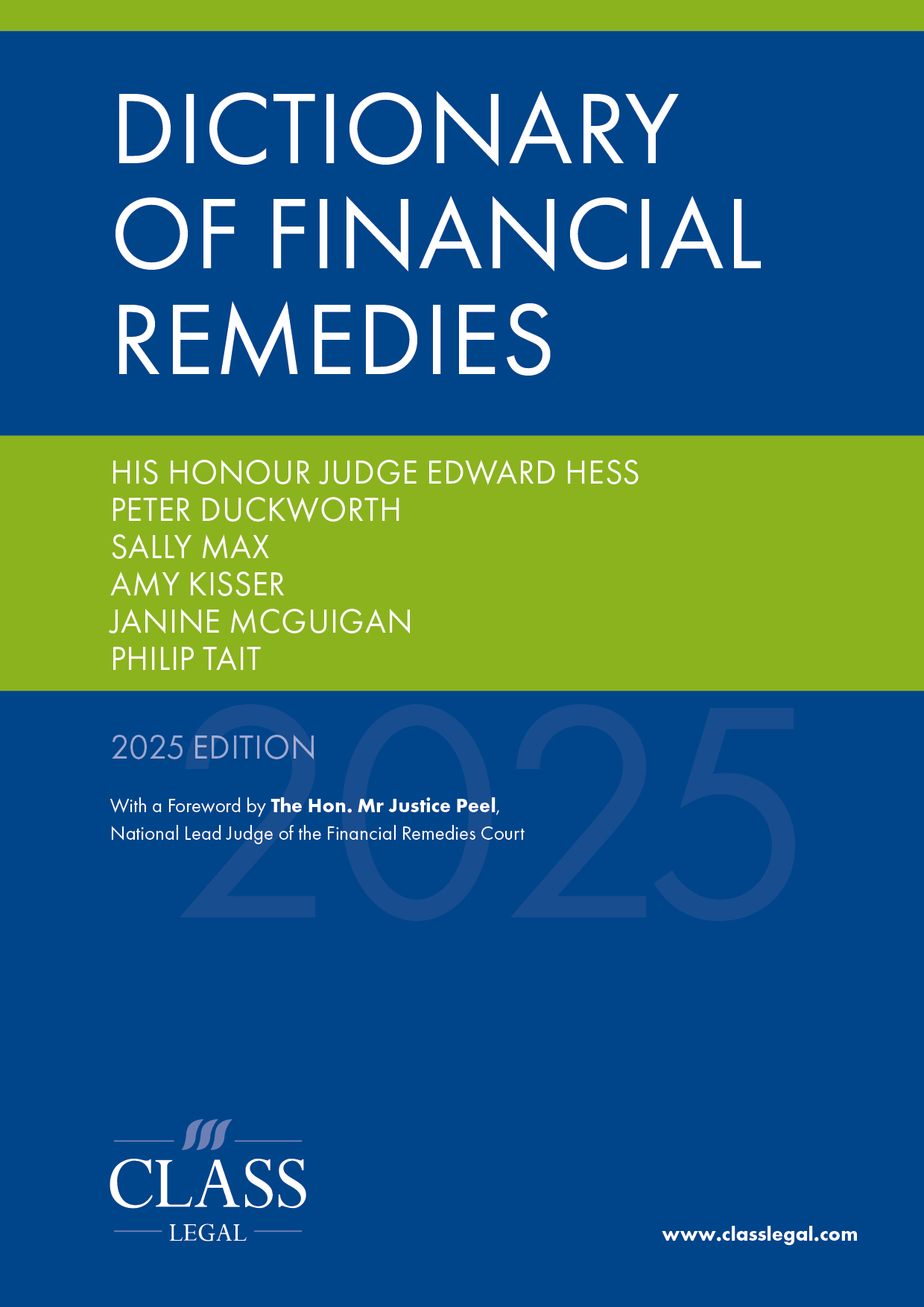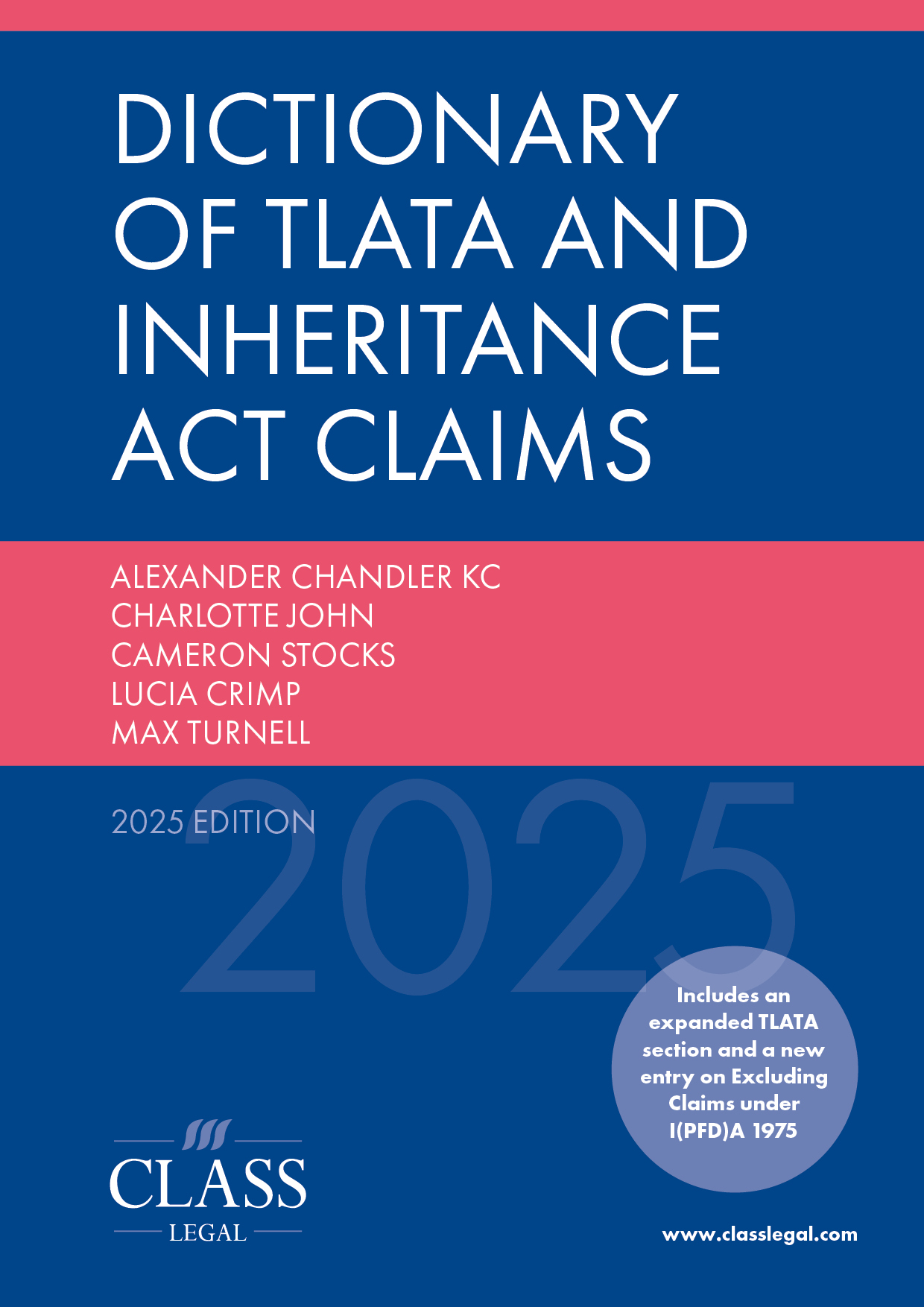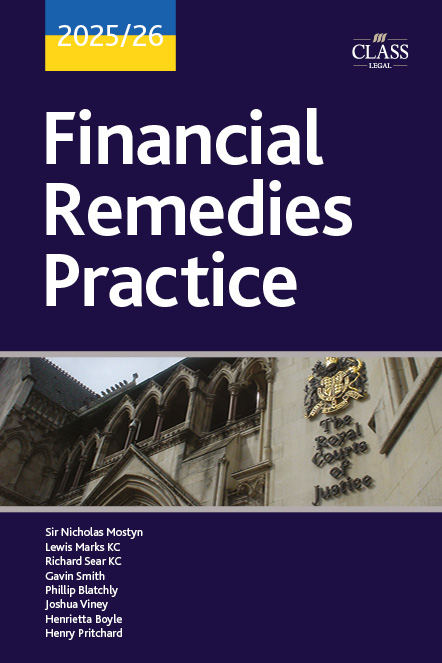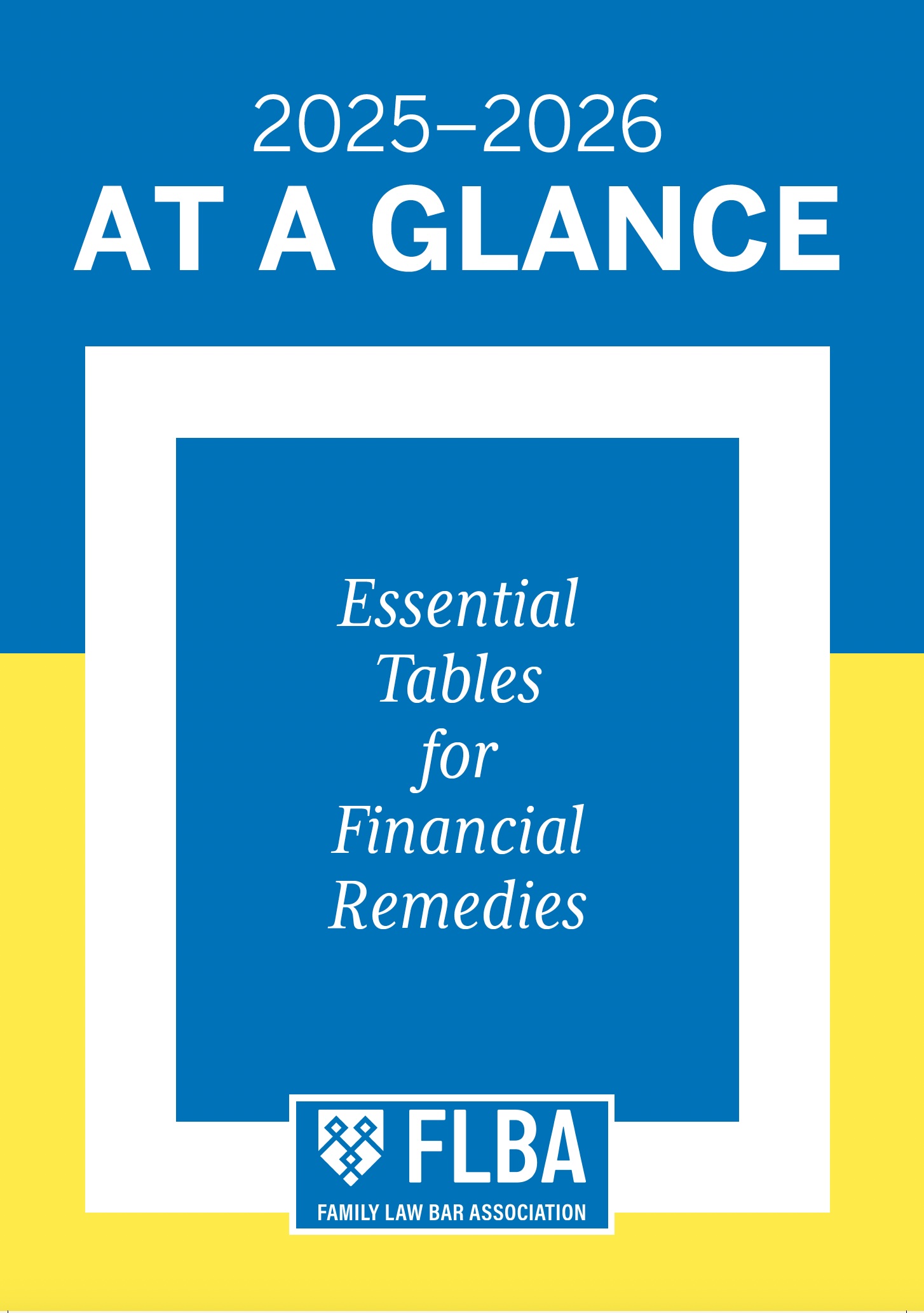
Sham, Adverse Inferences and the Burden of Proof: Awolowo [2025] EWCA Civ 641
Published: 21/05/2025 14:00

It’s often the financial remedy cases involving non-family barristers or judges which are the most interesting. There’s something about an outsider’s perspective which can illuminate legal principle and remind us that, per Mostyn J, ‘the Family Courts are not a desert island’.
Lord Sumption put it best in his speech to the At A Glance conference (‘Family Law at a Distance’, 2016) when he wrote:
‘I have always taken the view that legal specialisations are essentially bogus. At the bar, I liked to trespass on other people’s cabbage patches. As a judge I do it most of the time.’
On 16 May 2025, the Court of Appeal handed down judgment in Awolowo v Awolowo and Linksave Ventures [2025] EWCA Civ 641 in which the earlier decision of HHJ Vincent (sitting as a s 9(1) judge) was overturned. The Court of Appeal comprised Moylan LJ and two ‘non-family’ judges (Popplewell LJ, Sir Christopher Floyd). The husband retained family counsel (Mr Paul Infield); the parties were otherwise represented by leading public law specialists.
Issue
The case concerned the family court’s treatment in financial remedy proceedings (Part III) of debts allegedly owed by one party (the first respondent husband – ‘H’) to his brother’s company in Nigeria (the second respondent interveners) (‘IV’s), and the application of the rule in Harman v Glencross [1986] Fam 81 which is one of those authorities that sounds very familiar, but only rarely crops up in practice.
This is a rare example of a successful appeal against a court’s findings of fact. The appellant wife (‘W’) appealed against the order of HHJ Vincent dated 14 September 2023, on the basis that the court had erred in law, in relation to (1) the effect of a foreign order; (2) the failure to draw adverse inferences in relation to H and the IV’s lack of evidence; (3) the criticism of W’s lack of evidence, and (4) wrongly applying the burden of proof.
Facts
The essential facts of this complicated case were as follows:
- Following divorce proceedings in Nigeria, W applied under Part III of the Matrimonial and Family Proceedings Act 1984 for financial relief after a foreign divorce.
- In his Form E, H asserted that the family home in Hendon, worth £1.8m, was effectively held on trust for his brother’s company, who had allegedly advanced a loan of £1.6m for its purchase.
- W applied to set aside this loan pursuant to s 23 of the 1984 Act (counterpart to s 37 MCA), asserting that the loan was a sham intended to defeat W’s claim.
- H relied upon a ‘Loan Agreement’ between IV, H and another Nigerian company which recorded an interest free loan in the Naira equivalent of £1.6m, repayable ‘by installments [sic]’ after a year. No repayment schedule was attached.
- The IVs relied upon a ‘Charge of Whole’ dated 20 May 2019 wherein H purported to grant a charge over the family home.
- In March 2019 H, the IVs and another company entered into a settlement before the Nigerian courts, providing for H to repay £1.6m in four instalments within one year (June 2019 to June 2020). The IVs duly applied to register this judgment in the (English) High Court.
- H thereafter stated that he was unable to pay the agreed instalments, but would agree to a sale of the family home.
Charging order application
In October 2019, the IVs applied for a charging order against the family home. Master Eastman granted an interim charging order but adjourned the application for a final order, pending the hearing of W’s Part III application, which had been listed on 8–10 June 2020. As Moylan LJ commented in the CA, ‘the terms of this order … would be consistent with the decisions in Harman v Glencross [1986] Fam 81, Austin-Fell v Austin-Fell [1990] Fam 172 and Kremen v Agrest [2013] 2 FLR 187’ (at 39):
‘[40] These cases establish that, as set out in Kremen v Agrest at [11], when “the available assets are insufficient to satisfy both the financial claims of one former spouse (usually the wife) and the debts of the other (usually the husband) a conflict arises between the interests of the claimant and those of the creditors”. In those circumstances, at [13], a balance has to be struck between the interests of a judgment creditor and the interests of a wife. In my view, although it is not necessary to decide the question for the purposes of this appeal, the effect of these authorities is that the issue of whether a charging order should be made in favour of a creditor, and on what terms, is determined by the court when also determining the financial application (through the balancing exercise referred to) and not prior to that determination. They also support the conclusion that this balance has to be struck before a charging order is made or, at least, before it is made final.’
First instance
As noted above, within W’s Part III application, she asserted the loan document and other documents relied upon by H and the IV were sham; alternatively, had been created with the intention of defeating W’s claims, whereby it should be set aside. The IVs defence was that the loan agreements were genuine and that if she sought to set aside the Nigerian court’s order (the settlement) she should apply to set it aside in Nigeria, and not England and Wales, which lacked jurisdiction.
The original hearing of W’s Part III claim was adjourned, seemingly because the family court had no jurisdiction to deal with the Master’s charging order. W accordingly, in May 2022, applied to set aside the Nigerian judgment and also the interim charging order.
The general procedural muddle caused the case to be referred to Peel J, who listed the hearing before HHJ Vincent, sitting as a deputy judge of the High Court, who in an unpublished judgment found (in effect) that she could not attach much weight to W’s evidence because of the absence of documentary evidence produced by her in support. The court concluded that while W had ‘established reasonable grounds for suspicion’ she was unable to establish that the loan agreement was a sham.
Court of Appeal
In the Court of Appeal, W and the IV were represented by public law silks and juniors. Only the first respondent husband was represented by a family barrister.
W argued that the court’s decision was materially flawed in that the judge:
(a) failed to analyse the evidence property or take into account a range of material factors such as conflicting dates within the documentation relied upon, or reference to a company which had not by that date been incorporated;
(b) misunderstood aspects of the case, including the status of the Nigerian judgment, which had been taken as ‘effectively determinative of the genuineness of the alleged loan’;
(c) failed to take into account H and the IVs lack of documentary evidence in support, whereby the court should properly have drawn adverse inferences against them; and
(d) misapplied the burden of proof: having found that ‘reasonable grounds of suspicion’ had been established, the evidential burden should have shifted to H and the IV (cf. Paulin v Paulin [2009] EWCA Civ 221, Royal Main Group Ltd v Efobi [2021] UKSC 33).
H and the IV responded that the judgment had been careful and balanced, in accordance with its obligations to identify the crucial legal points and advance reasons for deciding them (Fage UK Ltd v Chobani UK Ltd [2014] EWCA Civ 5) per Lewison LJ at [114]–[117], Volpi v Volpi [2022] EWCA Civ 464 **per Lewison LJ at [2]–[5] at [65]), and that the appeal was no more than an ‘impermissible attempt to re-argue that judgment, based upon a selective reading of the judgment’. Counsel for the IV accepted that, while the burden of proof might shift, on the facts of this case that position had not been reached.
Determination per Moylan LJ (with whom other members of the court agreed)
(1) The trial judge had made a number of errors which vitiated her decision. Accordingly, this was one of the rare cases (cf. Volpi) in which an appellate court would interfere with a trial judge’s findings of fact;
(2) Firstly, in relation to the status of the Nigerian settlement:
‘[94] I have, of course, considered the judgment as a whole and have borne well in mind the advantages the judge had over this court and that the appeal could not succeed if it was based on the type of arguments referred to by Lewison LJ in Volpi v Volpi. I have, however, been persuaded that the judge’s finding that the loan was genuine cannot stand, in particular, because a critical element of her analysis was wrong and because she failed to consider, and misunderstood, a highly relevant part of the evidential picture. …
[96] Put simply, the judge’s understanding of the effect of what had happened in Nigeria and London was wrong. The Nigerian court had not “scrutinised” the steps taken by the Intervenor; the Nigerian court had not “judged [the debt] to be legitimate”; the loan agreement and other “documents” had not been “accepted and approved by the High Court in Nigeria as valid evidence of a debt owed by the husband to the intervenor company”; and the judgment had not been “entered on that basis”. As set out in that court’s order of 27 March 2019, all it provided was that: “Terms of settlement dated and filed on 21/3/2019 is entered as Judgment in this suit”. There was, I repeat, no adjudication in respect of the validity of the debt at all.
[97] The judge was also wrong because the English court had not “judged” the debt to be “legitimate”. The Nigerian judgment had simply been registered without any consideration of whether the underlying debt was legitimate.
[98] These, therefore, comprise a “demonstrable misunderstanding of relevant evidence” as well as “critical” findings of fact which have no basis in the evidence.’
(3) Thirdly, in relation to failure of H and the IV to produce documentation that should have been available. Adverse inferences should have been drawn:
‘[99] The second substantive error which vitiates the judge’s conclusion is that she failed to consider, and misunderstood, a highly relevant part of the evidential picture. The judge seemed to consider that her analysis was limited to the oral and documentary evidence which had been given in the case and that the absence of further documentary evidence was a point against the wife and not the husband and the Intervenor.
[100] In my view, this was a case as referred to by Arden LJ, in which the absence of documents was significant. It was a significant factor against the husband and the Intervenor which the judge failed to take into account at all. In respect of the Intervenor, there clearly would be company accounts and other documents which would be expected to be corroborative of a loan. The Intervenor produced no documents corroborative of the loan agreement or of the existence of the loan or which went to the company’s financial circumstances at relevant and material dates, including 2009.
[101] The absence of such evidence was a striking and clearly materially significant factor which required to be included in the judge’s analysis of the evidence, including as to the credibility of the evidence given by the husband and his brother. If, as the husband’s brother said, “the money loaned was made to De Skyline in Nigeria” (my emphasis), it would be expected that both companies would have documents evidencing the same.
[102] The judge did not refer to this at all when considering their evidence and case. Rather, and with all due respect of the judge, she inverted the position and took the absence of such evidence against the wife …
[103] As Sir Christopher Floyd observed during the course of the hearing, any balanced analysis of the evidence required the judge to take into account the almost complete absence of any documents (contemporary and otherwise) from the husband and the Intervenor in support of their case. The judge could not undertake the required balanced assessment without taking that into account.’
(4) Thirdly, the court failed to take into account certain relevant evidence, or inconsistencies in H and the IV’s account as to how money had been lent, and in its approach to the burden of proof:
‘[108] Finally, I noted above (paragraph 62) that another way of describing the preliminary issue would be, instead of being whether the loan agreement was a sham, simply to determine whether any such debt existed. This is, of course, relevant to the burden of proof, an issue which was addressed, albeit briefly, during the course of the hearing. Was it for the wife to prove that there was no such debt or was it for the Intervenor and the husband to prove that there was such a debt? If it was the latter, then (see paragraph 66 above) the burden of proof would be on the husband and the Intervenor. If, as in my view they are, Mr Infield and Mr Stein are correct in saying, respectively, that the “main issue was, in effect, the provenance of the money for the purchase of the family home” and the “issue at the heart of the case is the source of the funds for the purchase of the” family home, it was for the husband and the intervenor to prove the provenance/source and that it was a loan from the Intervenor. This will, therefore, be an additional matter which will need to be addressed at the rehearing below.’
Finally, while this is not part of the case’s ratio, in relation to the evidence required to prove ‘sham’, Moylan LJ expressed caution about Mostyn J’s summary in Bhura v Bhura [2004] EWHC 727 (Fam) at [9(vii)], preferring instead the approach adopted by Sir Geoffery Vos in Bank of Petersburg PJSC v Arkhangelsky [2020] EWCA Civ 408:
‘[44] It does not seem to me that the law is now much in doubt. It is encapsulated in the following passages from Baroness Hale of Richmond’s judgment in In re B [In re B (Children) (Care Proceedings: Standard of Proof) (CAFCASS intervening) [2009] AC 11] which, though stated to be applicable to care proceedings are, I think, of more general application in civil proceedings: “64. … Lord Nicholls’s nuanced explanation [in In re H] left room for the nostrum, ‘the more serious the allegation, the more cogent the evidence needed to prove it’ to take hold and be repeated time and time again in fact-finding hearings in care proceedings …”’









